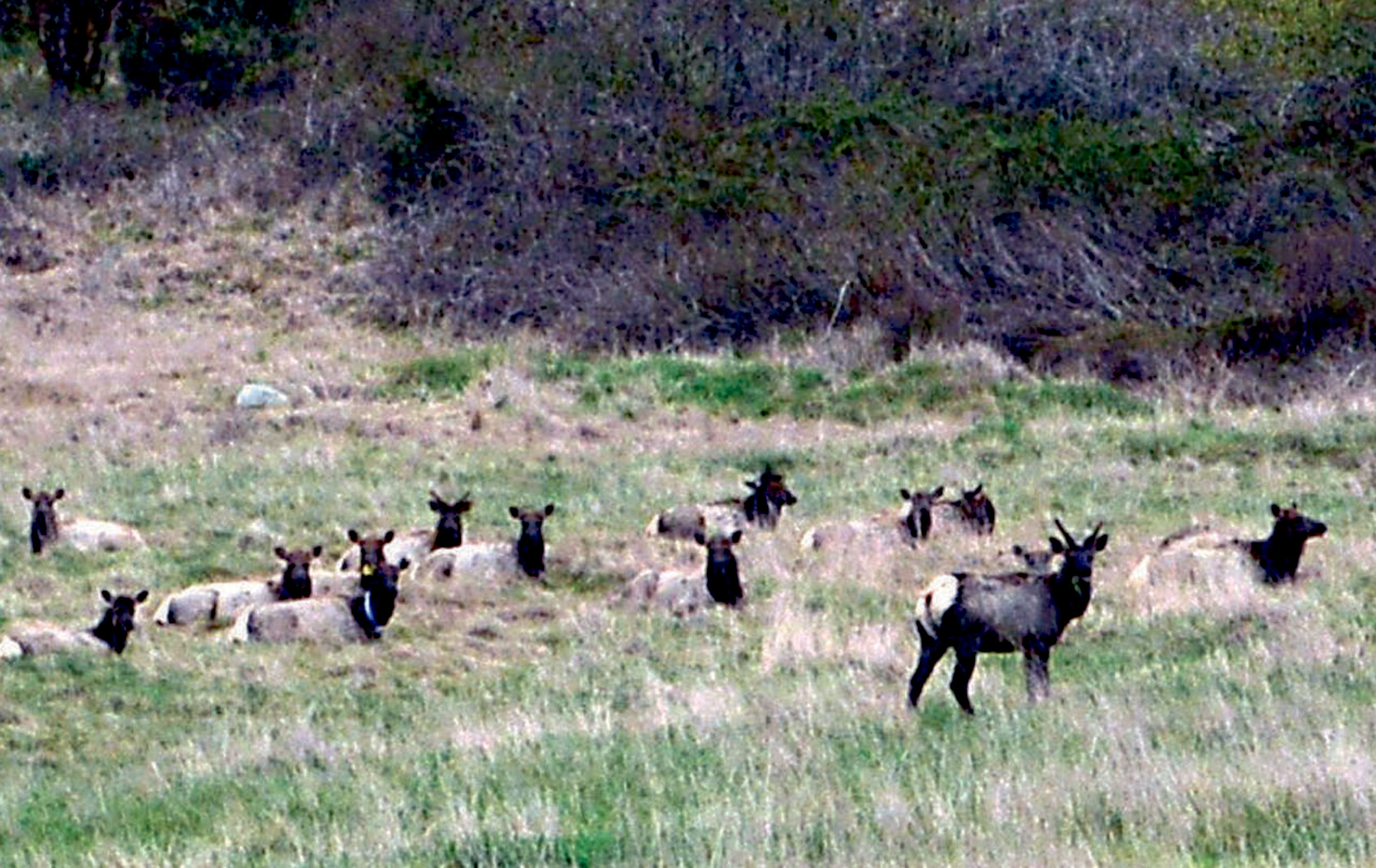SEQUIM –– For the first time in a decade, there won’t be any public hunts of the Dungeness Valley’s signature elk herd this winter.
“We’ve got it down to a number we think we can sustain with limited hunts, so we have done away with public hunts for the Sequim herd,” said Sgt. Eric Anderson of the state Department of Fish and Wildlife.
There will be hunts to cull the herd, but they will be performed by selected master hunters, land owners who have crops damaged by the Roosevelt elk and hunters on the Fish and Wildlife staff.
Seventeen were culled from the herd during the six-month season that ended last March.
Anderson said they expect 10 elk will be hunted this year.
With the new calves born in the spring, the herd now numbers around 40, with 10-12 of those being bulls, according to Tim Cullinan, the wildlife biologist who monitors the herd for the Point No Point Treaty Council.
“We don’t really take a full count until the spring because there can be a lot of mortality in the calves over the winter,” Cullinan said.
The target is to bring the herd to a population of 25, with three bulls and the rest cows and calves, Anderson said.
Up until about six years ago, the herd numbered more than 100 and was causing tens of thousands of dollars in damage to Dungeness Valley crops.
In one night, the herd ate some $20,000 worth of field cabbage, Anderson said.
“We bumped up the hunts to offset that,” he said.
“We want to keep the herd there for people to enjoy, but we also need to limit the damage that can be done by a population that has no predators.”
Previous policy also allowed landowners who received hunting tags to sell them to the public as compensation for elk damage.
But that has changed, Anderson said, as the state has created a larger pool of funding to compensate landowners for wildlife damage.
Those land owners will be allowed to keep the meat of the elk they kill, as will the master hunters.
Elk taken by Fish and Wildlife hunters will be donated to the Jamestown S’Klallam, Lower Elwha Klallam and Port Gamble S’Klallam tribes who use them in food programs for tribal elders.
Hunters may have a harder time finding the elk this year, though, as Cullinan said they have adjusted their schedules to stay out of sight.
Cullinan has tracked the herd with radio collars placed on some elk for years, but this year, he has been keeping an eye on the animals using two elk wearing collars that transmit their locations to satellites.
From that information, Cullinan has noticed the herd of cows and calves is spending most of its days in the woods near Graysmarsh Farm above Jamestown and leaving at night to feed on maturing corn fields.
“They’re pretty well-trained,” Cullinan said. “It’s like they’ve read the hunting regulations pamphlet and figured out there’s no hunting after dark.”
Historically, the herd spent most of its time in the Olympic foothills south of Sequim.
After discovering a steady supply of field crops in the Dungeness Valley in the early part of this century, the elk began to spend more and more of the year out of the foothills.
________
Sequim-Dungeness Valley Editor Joe Smillie can be reached at 360-681-2390, ext. 5052, or at jsmillie@peninsuladailynews.com.

